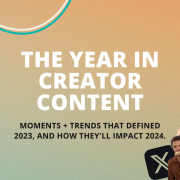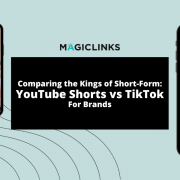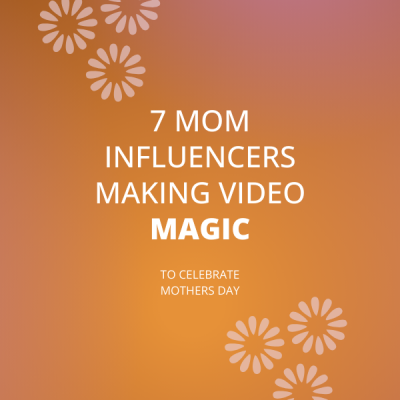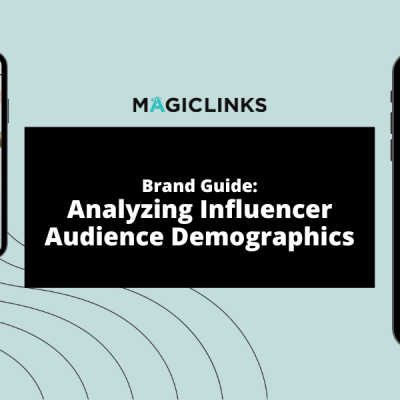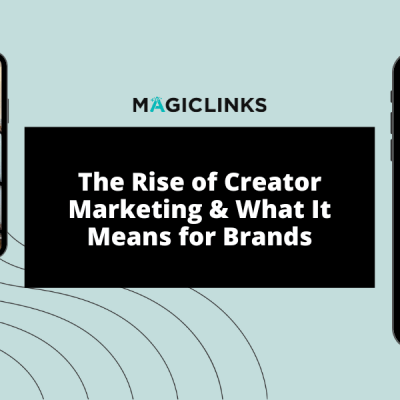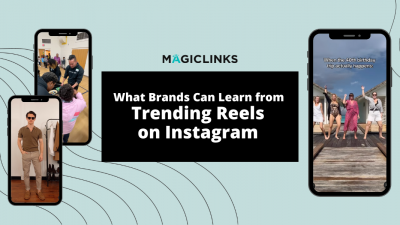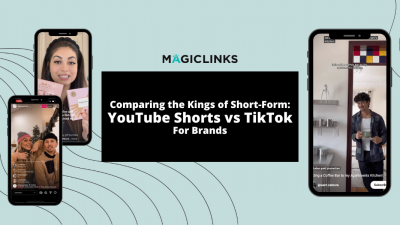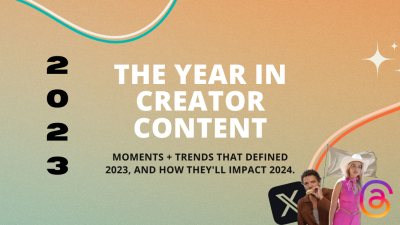Influencer marketing’s growth is set to continue this year and beyond. Now is the time to review or think about tracking influencer programs to take your brand to greater heights starting now. Let’s kick the New Year off with a bang!
Like any marketing strategy, it’s all about defining specific metrics and tracking those metrics to determine performance in the short and long term. Any kind of content marketing is an investment, and you need to know when it is and isn’t working.
At MagicLinks, we help businesses thrive by tracking specific influencer marketing metrics to ultimately achieve success. Let’s dive in!
Showing the Value of Influencer Marketing
Influencer marketing is a collaboration between a brand and a popular social media user to promote that brand’s products or services. Over the past few years, the global influencer marketing value has more than doubled — to $21.1 billion as of 2023.
Top brands are shifting away from vanity metrics like follower count to truly understand the content creators they’re working with. A creator’s audience has to be more than simply a follower count and you must set clear goals as you plan your strategy for the new year.
Give each goal a numerical value and a deadline. For example, you might say, “I want this campaign to increase sales by 10% within the next six months.” Be optimistic but realistic (hello, SMART goals!), and work closely with your team to ensure you’re on the same page don’t be shy about communicating with your content partners that your goals go far beyond simply impressions.
Not sure how to decide which growth metrics are most important to track? Start by tracking the below stats!
1. Engagement & engagement rate
How potential customers engage with your brand can give you insight into how your influencer marketing campaign is performing. Keep track of these engagement metrics:
- Comments
- Shares
- Clicks
Note that while likes can measure a broad level of engagement, they aren’t as meaningful as comments/shares and therefore aren’t the best metric to evaluate success.
An important number to track here is engagement rate, which is the total number of interactions your content receives divided by your follower count (then multiplied by 100 to get a percentage). You can also measure this on a micro level, dividing interactions by the number of views a specific piece of content achieves.
It’s best to set different goals based on platform too; each social channel will vary in terms of what success looks like.
MagicLinks Benchmarks: MagicLinks’ benchmark for engagement rates on short-form videos (like TikTok and Reels) is 7%. For long-form (traditional YouTube videos), an engagement rate of 5% or higher is considered a big win.
2. Conversions & conversion Rate
Conversions can be different things — from outright purchases to trial sign-ups. The more conversion metrics you track, the better you can understand your audience and their behaviors.
You can track conversions via:
- Trackable links
- Discount codes
- Affiliate links
Each of these options includes a strong call to action to encourage interested consumers to take the next step.
In addition to the straight number of conversions, you’ll also start tracking influencer-attributed conversion rates. At MagicLinks, we define conversion rate as the number of transactions divided by the total number of clicks.
MagicLinks Benchmark: >1% Last Click
3. Click-through rate (CTR)
Calculating your click-through rate is a way of how well creator content is driving people to your site. You can measure this web traffic via marketing measurement tools like the MagicLinks Brand Portal, which will give you insight into how many people visited your site, how much time they spent there, and other important growth metrics.
When you utilize tools like these, you can make data-driven decisions that more reliably drive business growth. Each time you make an adjustment to your strategy, you’ll be able to clearly see the effect it has on your overall goals, allowing you to fine-tune your approach on the fly.
MagicLinks Benchmark: >1%
4. Return on ad spend (ROAS)
After it’s over, how do you know whether your influencer marketing campaign was worthwhile? It’s time to calculate your return on ad spend, which marketers know as ROAS. ROAS is a form of ROI that measures the amount of revenue earned for each dollar spent on advertising for a specific campaign.
Because consumers now have so many paths to purchase, calculating ROAS has traditionally been a struggle for marketers. In an ideal world (for marketers), the buyer’s journey would like look this: a fan views a piece of creator content on YouTube, discovers a product they love, clicks a link directly to the brand’s site, and immediately purchases.
However, this journey is relatively rare. For starters, this same person may decide to purchase in-store, or they may decide to come back to the product weeks or months later through a Google search. On a large scale, this makes attribution tricky.
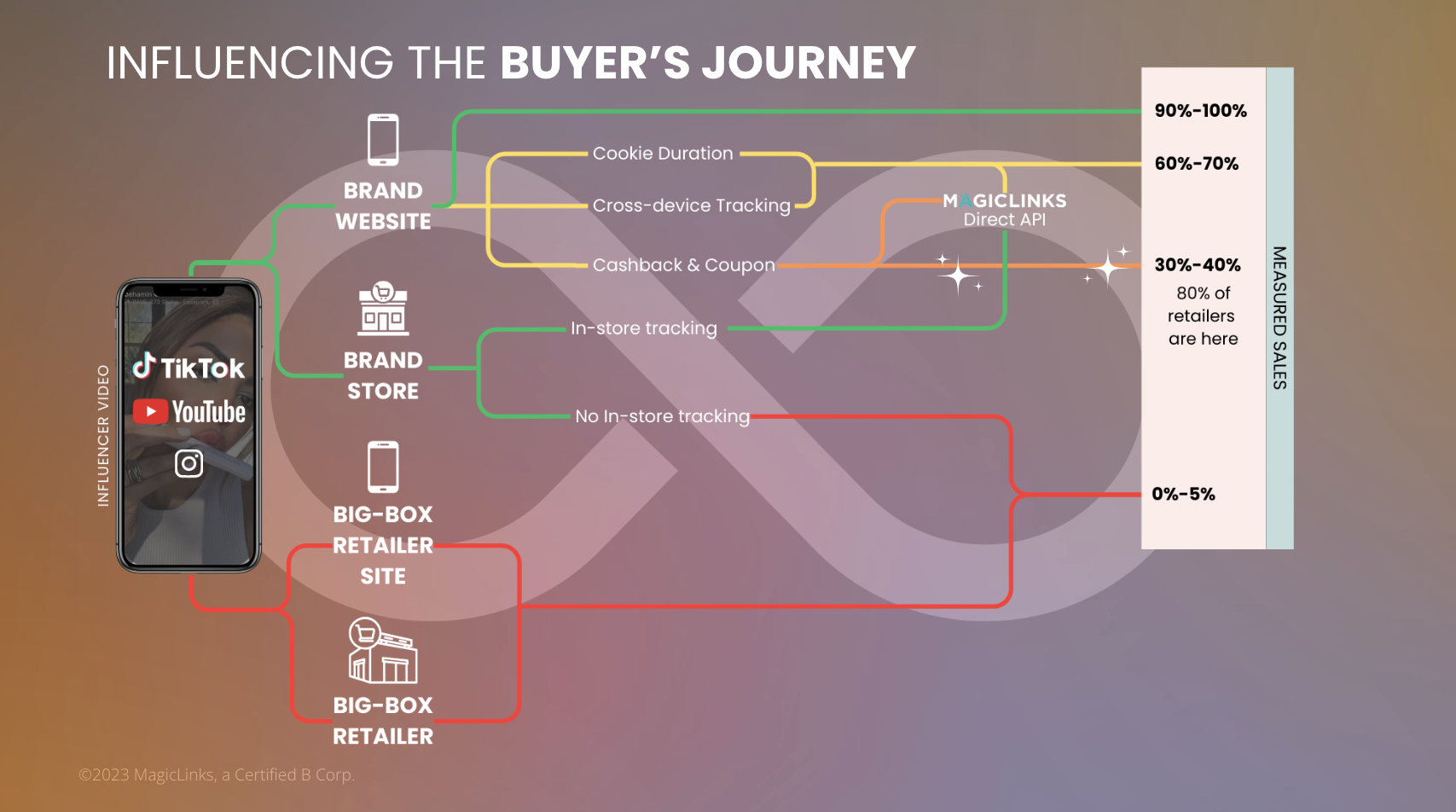
MagicLinks Benchmark: ROAS is highly dependent on a number of factors: brand, category, and investment, to name a few.
Seek Out Partners in Tracking Influencer Performance
No matter how you approach your influencer marketing strategy, make sure to keep track of your top and bottom of funnel along the way. Then, use these growth metrics and calculate your ROI to influence future marketing decisions.
The right partners and tools will clearly illuminate the value of your brand’s creator marketing programs. If your data isn’t delivering, reach out to MagicLinks.

